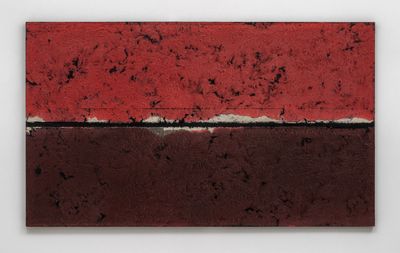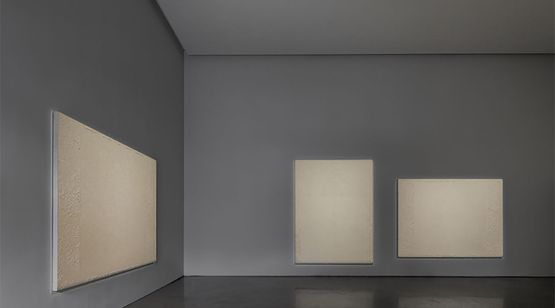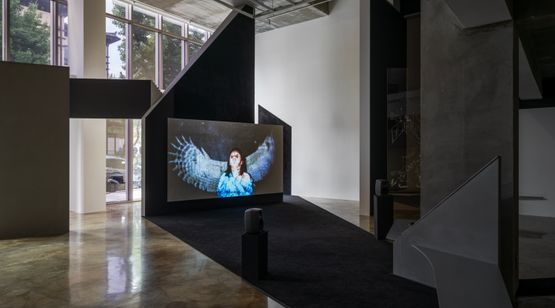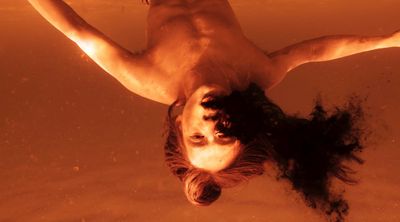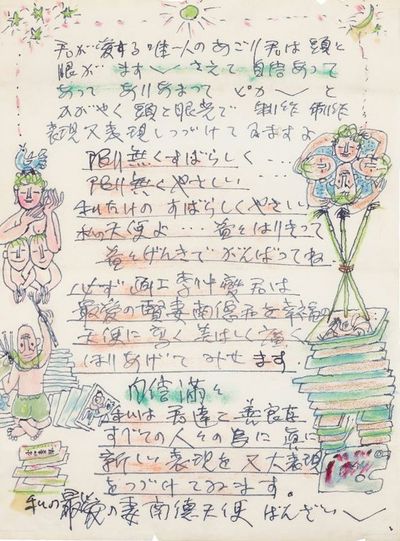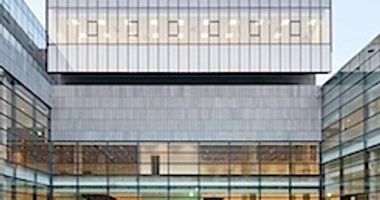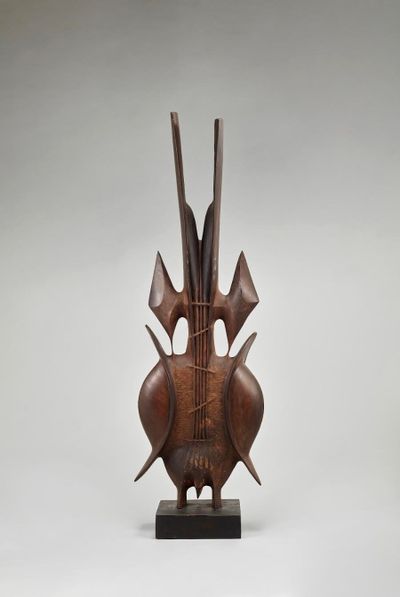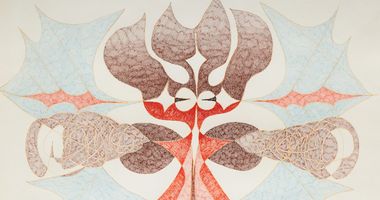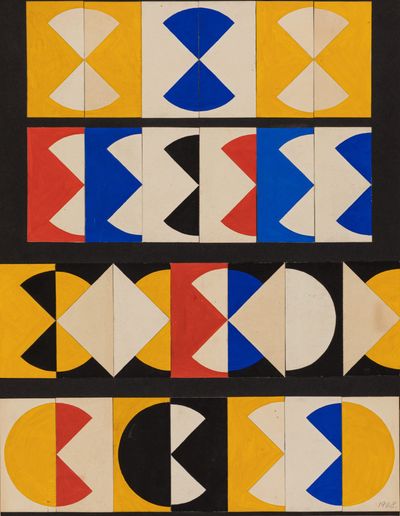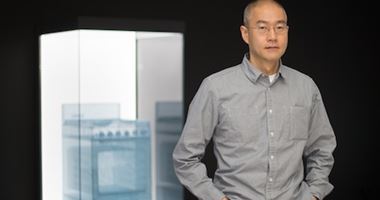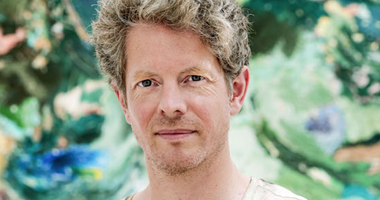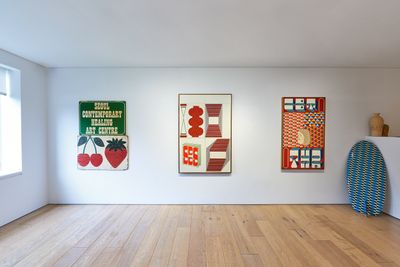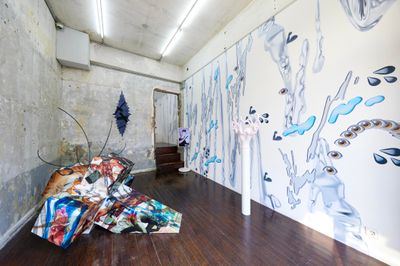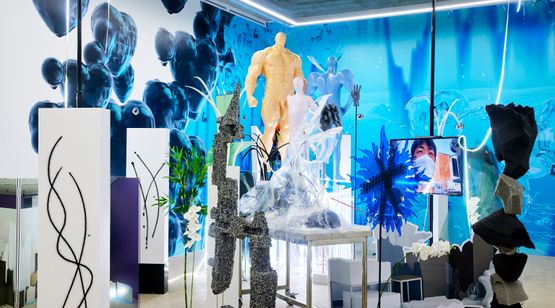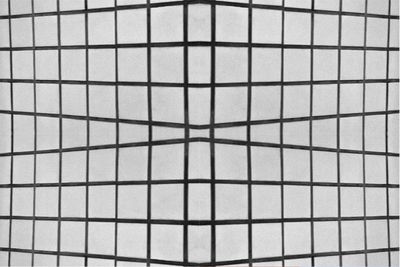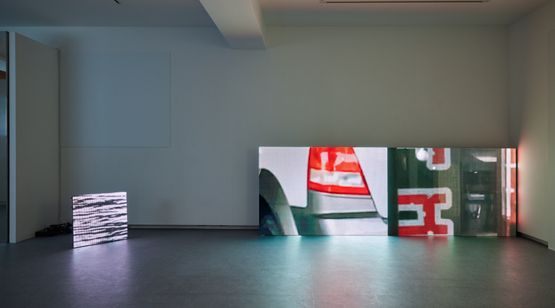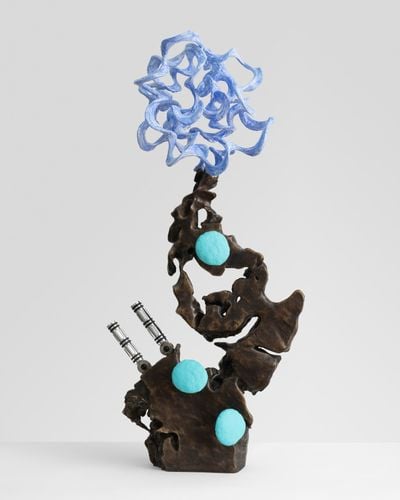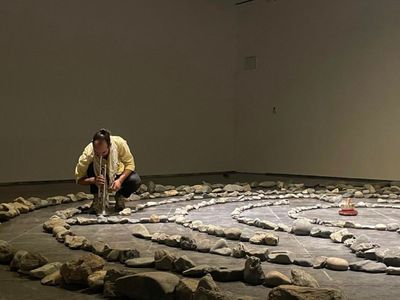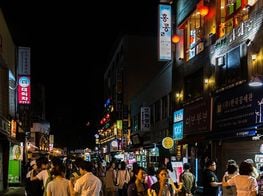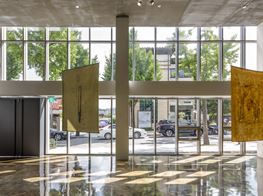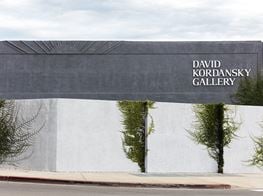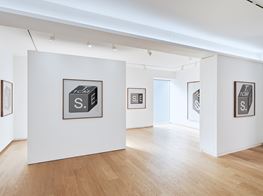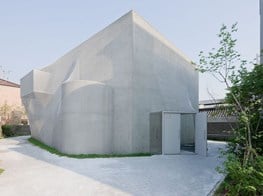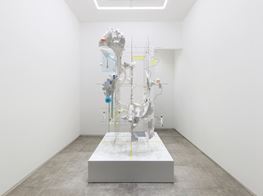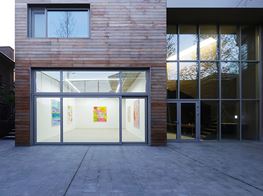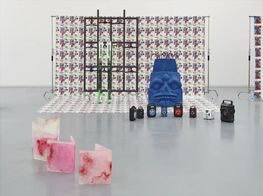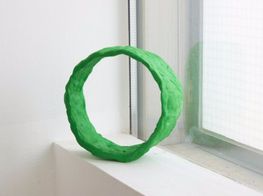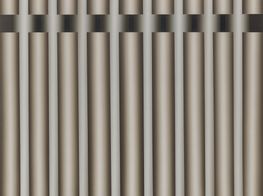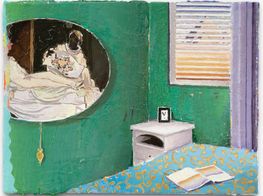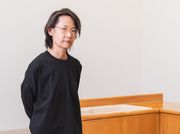Seoul's Must-See Art Exhibitions
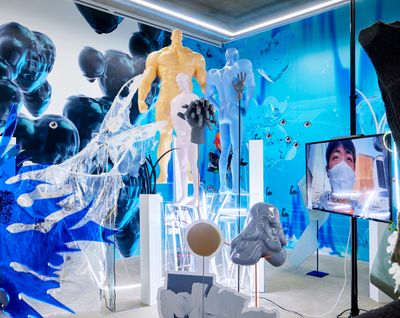
Exhibition view: Haneyl Choi, Manner, GALLERY2, Seoul (25 August–1 October 2022). Courtesy GALLERY2.
Both opening on 2 September 2022, art fairs Frieze Seoul and Kiaf SEOUL will galvanise South Korea's art scene. Ocula Magazine reviewed the dozens of exceptional exhibitions planned for September, and provides its recommendation on what to look out for in Seoul's art galleries, institutions, and non-profit spaces.
Exhibitions in Jongno-gu & Jung-gu
Chung Chang-Sup: Mind in Matter
PKM Gallery, 40 Samcheong-ro 7-gil
25 August–15 October 2022
A seminal figure of the 1950s Dansaekhwa monochrome movement, Chung Chang-Sup is renowned for minimalist paintings that incorporate Taoist principles of harmony and balance to embrace a natural mode of working with material.
Using dak, a paper pulp drawn from mulberry fibre that the artist spreads across the canvas with his hands, paintings like Meditation 91216 (1991) are made up of subtle encounters between colours, in this case scarlet and deep burgundy, and with texture.
Rugged surfaces evoking material degradation emphasise the paper's natural origins while extending a reflection on time's passage.
Sung Hwan Kim, Night Crazing
Barakat Contemporary, 36 Samcheong-ro 7-gil
30 August–30 October 2022
Recently shown at MoMA, Sung Hwan Kim's inquiries into the writing of history and its multiplicity draw from diverse influences starting from his birthplace in Seoul, to his later homes in Amsterdam and New York.
The artist's largest exhibition in Korea in eight years gathers elements that have recurred in his work as mixed-media installations spread across Barakat Contemporary's two venues, responding to the features of each site. Foreshadowing an appearance at the 2022 Busan Biennale, the artist states his interest in reevaluating the nature of boundaries, with emphasis on the fluidity of knowledge.
The 2021 Guggenheim Fellowship awardee will also be showing two video works: Washing Brain and Corn (2010) and Love Before Bond (2017), the latter exploring notions of ethics and aesthetics relative to culture, ethnicity, and migration, notably exhibited at the 2017 Venice Biennale.
Korakrit Arunanondchai: Songs for dying / Songs for living
Art Sonje Center, 87 Yulgok-ro 3-gill
30 August–30 October 2022
Bangkok-born artist and filmmaker Korakrit Arunanondchai's first solo exhibition in Korea includes two recent video works: Songs for dying and Songs for living, both made in 2021. Watched together, they mirror the cycle of life while highlighting the distinct elements that define individual existences.
Songs for dying explores the departure of spirits from the world by combining personal and collective memories of loss, such as practices of shamanistic healing after the 1948 Jeju Island massacre in South Korea.
Shot with filmmaker Alex Gvojic, spirits return to the world in Songs for living, which extends an inquiry into life after loss, where science fiction and horror films are combined with Buddhist motifs across a series of rapidly succeeding scenes.
Lee Seung Jio
Kukje Gallery, 54 Samcheong-ro
1 September–30 October 2022
Renowned for dynamic abstractions of the cylindrical pipe form, Yongcheon-born painter Lee Seung Jio, who worked in the aftermath of the Korean War and co-founded the avantgarde group Origin, committed to this single shape for nearly 30 years, in search of pure aesthetic expression.
Lee titled all his paintings Nucleus; a shape inspired by the flashing forms the artist noticed while travelling by train. 'It was like the inability to forget a person who made a strong first impression,' Lee said.
Experimenting throughout the late 1960s until his death in 1990, Lee alternated between blurred and hard-edged contours to create a sense of movement and optical depth within his canvases, as seen in the oil on canvas Nucleus 85-1 (1985), among his later works.
MMCA Lee Kun-hee Collection: LEE JUNG SEOP
National Museum of Modern and Contemporary Art Korea | MMCA
30 Samcheong-ro, Jongno-gu
12 August 2022–23 April 2023
This significant retrospective of works by painter Lee Jung Seop, beloved for realistic depictions of farm animals and pastoral scenes in which entangled bodies radiate serenity and play, showcases a collection of intimate works created during the Korean War.
Among the 100 works on view are postcard drawings Lee sent his family after their relocation to Japan in the 1940s. Further tinfoil paintings made the following decade attest to the impoverished conditions under which the artist worked, nonetheless amounting to a prolific oeuvre.
While the past belongs to memory, the painter held on over the years, with pencil-and-oil drawings like Five Children and Rope (1950), depicting the nude figures tangled in a green cord, speaking to the artist's persisting desire for return and reunion.
Moon Shin Retrospective: Towards the Universe
National Museum of Modern and Contemporary Art Seoul | MMCA
30 Samcheong-ro 5-gil
1 September 2022–29 January 2023
We live in reality but dream of invisible futures, or so South Korean-Japanese sculptor and painter Moon Shin once said. The artist's present retrospective includes a 1972 ebony sculpture shaped like a fortified heart hinting at the utopian ideals in question.
Born in Japan, the artist was known to be a frequent traveller. He initially studied painting but became known for sculptures with impeccable symmetries, later expanding into interior design, craft, and architecture, while moving between Japan and Korea, Korea and Paris.
While figurative, Moon Shin's symmetries are from another universe, with smooth polished forms balanced on thin stilts, adorned with sharp spikes—as with the erect shape of one rather intimidating ant that appears to vest black armour, An Ant (La Fourmi) (1985).
Folded – Unfolded
Sungkok Art Museum, 42 Gyeonghuigung-gil
27 August–15 October 2022
A major overview of postwar Hungarian abstraction, first of its kind in Korea, showcases the region's experimental spirit across painting and film, including works by 15 Hungarian artists from Budapest and Pécs, and émigrés who fled to Western European countries after the war.
According to co-curators Zsolt Petrányi and Sungah Serena Choo, artworks made during this period did not receive the proper recognition they deserve. Here, they form a dialogue with postwar art in Korea, which has met its own challenges amid social and political unrest.
Inviting viewers to rethink the possibilities of abstraction and experience the unknown, notable works include Simon Hantaï's folded and knotted canvases that added depth to his kaleidoscopic paintings, and geometric abstractions by Ferenc Lantos, such as DÉDÁSZ plan (1968).
Do Ho Suh and Children: Artland
Seoul Museum of Art | SeMA, 61 Deoksugung-gil
26 July 2022–12 March 2023
In this participatory exhibition, children are invited to contribute to the making of Artland, a fantasy world first conceived by sculptor and installation artist Do Ho Suh and his family.
Made of modelling clay and populated by alien creatures and vegetation, Artland is an ongoing collaborative project that prompts young minds to exercise their creativity while considering the different species that populate our ecosystems.
Offered alongside clay, a guidebook by the artist's two children, The Wonders of Artland, includes an encyclopaedic catalogue of the island's species, drawing activities, and an augmented reality pull-out poster.
Exhibitions in Gangnam-gu
Summer Love 2022
SONGEUN, 441 Dosan-daero
30 August–24 September 2022
Celebrating the contemporary art scene's younger generation, Summer Love 2022 is the fourth in a series of exhibitions supporting emerging talent since 2015, and gathers a selection of works that speak to the passion and commitment of young artists today.
Devoid of a curatorial concept, the exhibition brings together new works by 13 young Korean artists selected through open call, shown alongside works by performance artist Lee Kun-Yong, and Kwon Ahram, recipient of the 2021 SONGEUN Art Award.
The exhibition includes a performative installation by French-Swiss duo Barbezat-Villetard, known for formal alterations of physical and psychological spaces, When the hammer hits, your head splits like a banana, part II (2022).
Matthias Weischer: Mirrors and Things
KÖNIG SEOUL, 412 Apgujeong-ro
1 September–9 October 2022
Known for uncanny depictions of interior spaces, Leipzig-born painter Matthias Weischer brings 12 new oils on canvas to KÖNIG SEOUL.
Muted scenes with rough fresco-like walls containing an array of domestic objects seem to retain memory accumulated over time, where real and depicted space merge into a single plane questioning traditional painting as objective representation.
In the past, Weischer's paintings have veered into abstraction as he embraced an open-ended spatial configuration, as with Welle (2014), which depicts a series of collapsing sheets of paper positioned to resemble a staircase against an ombré background.
Barry McGee: Everyday Sunrise
Perrotin, 5 Palpan-gil
5 August–8 September 2022
San Francisco-born graffiti artist Barry McGee brings his unique visual language to Perrotin for his first solo exhibition in Seoul, which includes abstract compositions splattered with dense geometric patterns.
The exhibition is as bright in colour as its title suggests, supplemented by taglines and small frowning faces within some of the geometric compositions. Wearing severe expressions of angst and disdain, they appear to undergo middle-age crises.
Untitled panel paintings like the 2022 acrylic and gouaches on view reflect the blend of influences that inform McGee's work, which attests to the continual merging between fine art and popular forms, where contemplations about art's role within society take centre stage.
Exhibitions in Yongsan-gu & Elsewhere
Haneyl Choi, Manner
P21 and GALLERY2, 74 Hoenamu-ro & 204 Pyeongchang-gil
25 August–1 October 2022
'I'm not an activist,' Choi has said, 'I'm studying how to present the story of the L.G.B.T.Q. community to the world through art.' For Choi, the medium of sculpture, which has been historically overshadowed by traditional painting in Korea, evokes the marginalisation of queer communities in the same places.
Referencing anything from drag to bondage, the artist's freestanding works pose strong statements with pared-down forms and symbolism that personify queer cultures and integrate their motifs within traditional Korean culture.
Skirt-wearing totems like Mini Han (2021), a thick white pole holding a folding fan (printed with collaged images of men with naked torsos and the word 'Trunk') at chest level, invite viewers to imagine the plausible existence of that which resides at the intersections.
Taeyoon Kim: Oblique Afternoons
Whistle, 3F, 12 Hoenamu-ro 13-gil
19 August–1 October 2022
Replicating the relative experience of time across video and sound, Taeyoon Kim's Oblique Afternoons includes a series of colour-pencil drawings based on afterimages of video works on view, which explore the phenomena of time's passage within the city.
Using footage and sounds collected from the last three years, the artist distorts the visual data to form abstract landscapes in which sound plays a revelatory role.
First broken down by wavelength, then re-assembled in rhythm, familiar hums of conversation and rain overlap with the blurred frames of the video works to shape a contextual experience of time and space.
Seoul Pop-Up Exhibition
David Kordansky Gallery, 157, Itaewon-ro 55-gil
18 August–5 September 2022
With painter Calvin Marcus showing at Frieze, David Kordansky Gallery arrives in Seoul with a pop-up exhibition showcasing their roaster of L.A.-based and international artists—among them Huma Bhabha, John Armleder, and Guan Xiao.
The blend of distinct practices includes Bhabha's futuristic cork-and-Styrofoam figure, Sky Teller (2022) and an intricate sculpture titled Daggers (2022) by Xiao that resembles a microscope, its bronze trunk intercepted by three globes painted in light-blue acrylic and a set of motorcycle pedals.
Like Bhabha, Xiao's works are known for their temporal ambiguity, often made by reconfiguring present-day materials and objects into what appear to be relics, alluding to the convergence of things that manifest and return across centuries and civilisations.
Philippe Battikha: Hitting Mung
Alternative Space LOOP, 20, Wausan-ro 29na-gil, Mapo-gu
12 August–8 September 2022
Montreal-based musician, composer, and sound artist Philippe Battikha draws attention to the importance of sonic environments and how they can shape our relationship to place in a perceptual world dominated by visual imagery and algorithmic sounds.
Hitting Mung, or emptying the mind in Korean, explores mass-commodified avenues to leisure—pop culture, material purchases, packaged experiences—for which we pay to achieve states of 'nothingness', and asks whether their promised respite is indeed the case.
Including a participatory project, the exhibition presents alternative environments of relaxation, notably through sound, and a spiral rock installation that encourages spatial awareness by interjecting in the linear pathways that underlie our mindless displacements.
Explore Ocula's Seoul Art Guide for more information on Seoul art exhibitions and space.—[O]

